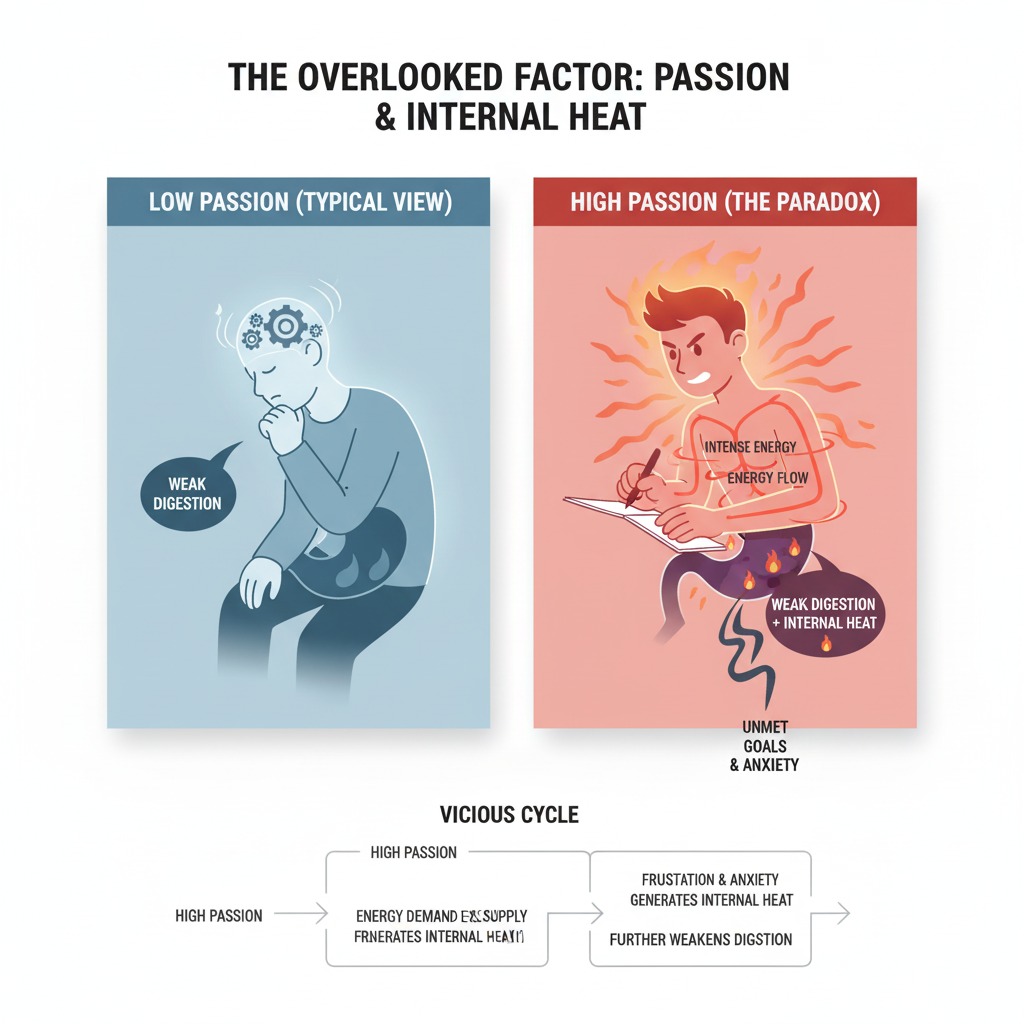3 Surprising Truths: Unpacking Hot Symptoms in “Cold” Lesser-Yin Person
When we delve into traditional Korean medicine, specifically Sasang (Four Constitution) and Eight Constitution Medicine, the concept of body types is central. However, common descriptions often oversimplify. Today, we’re diving into a fascinating paradox: individuals with a “cold” constitution, particularly the Lesser-Yin person type, who exhibit pronounced “hot” symptoms. This post will reveal three surprising truths about this complex phenomenon.
The Misconception of the “Cold” Lesser-Yin Person
In many books and media, individuals classified as Lesser-Yin persons, or specifically the Vesicotonia and Renotonia types within Eight Constitution Medicine, are often described as having a cold and weak digestive system, easily fatigued. They are typically seen as having a cold and rigid stomach with weak digestive power. The Vesicotonia type, in particular, is frequently depicted as having a small, prolapsed stomach due to its extreme coldness and weakness.
I’ve often written about the inherent weakness of the Lesser-Yin person’s stomach, but human beings are far more complex than such simplistic categorizations suggest. While a weak digestive system is a common thread, the manifestation of illness can vary greatly.
Eight Constitution Medicine and Sasang Medicine categorize people based on functional imbalances in their five major organs, which play a primary role in physiological phenomena. This framework explains many aspects of health and disease, providing a crucial standard. However, it doesn’t always offer explicit details about the diverse patterns that can emerge within each of the eight constitutions.
There’s also a perception that other distinctions, which might change throughout a person’s life, are less important. This means while we can categorize people using additional criteria, these criteria don’t necessarily align with the Eight Constitution framework, so we don’t end up with 16 or 32 body types. Instead, we acknowledge the existence of multiple, distinct criteria.
The Overlooked Factor: Passion and Its Impact
Let’s consider an abstract and immeasurable criterion like “passion” when looking at Lesser-Yin persons. While some Lesser-Yin persons may lack passion or drive, many are overflowing with it.

Examining the disease progression in passionate Lesser-Yin persons (those with “more heat”) reveals a clear pattern. These individuals often have many aspirations and big dreams. However, their insufficient digestive power prevents them from acquiring enough energy, leading to a constant state of exhaustion.
As things don’t go as planned, the characteristic anxiety of the Lesser-Yin person intensifies, generating internal heat, further depleting their vital energy, and weakening their digestion. This state also leads to increased consumption of blood, sweat, and bodily fluids.
If they rest sufficiently at this point, they can recover. But if they push themselves further, illness sets in. Their body progressively accumulates more heat, and bodily fluids become deficient, yet their weak digestion struggles to replenish them. The combination of excess heat and poor digestion even makes sleep difficult.
Therefore, all observable symptoms (sweating, heat, headaches, sleep disorders, constipation) appear to be “hot” symptoms. Yet, surprisingly, many of these cases turn out to be Vesicotonia or Renotonia types—Lesser-Yin persons—upon closer examination and treatment.
The Shanghan Lun Connection: A Historical Perspective
The Shanghan Lun (Treatise on Cold Damage), specifically in its discussion of Yangming Fu Organ disease with “stomach repletion syndrome,” describes individuals who suffer from excessive heat, hardened stomach and stool, and fluid deficiency leading to constipation. Interestingly, it also mentions those whose stomach’s Yang energy is insufficient, leading to poor appetite, deeming them difficult to treat.
This description closely aligns with what we observe in the “hot” Vesicotonia and Renotonia types—the Lesser-Yin persons who present with excess heat. It highlights that even historically, the complexities of these constitutions were recognized, even if the direct terminology wasn’t identical.
The Takeaway: Beyond Simple Classifications
Today’s explanation might seem a bit complex, but the core message is twofold:
-
External heat does not always mean internal heat. What appears hot on the surface might be a compensatory reaction in a fundamentally cold constitution.
-
Each of the Eight Constitutions and Sasang Constitutions encompasses a diverse range of individuals. Simple labels can be misleading, and a deeper understanding is often required.
It’s also worth noting that individuals with a mix of cold and hot energies can certainly be treated. However, their treatment approach is typically more intricate and requires a nuanced strategy.
For the original Korean text, visit here.
If you’re curious about the basics of traditional Korean medicine and health, read the following article:
The Truth About 8 Constitution Medicine: A Revolutionary Healing Framework Explained
Learn Why Studying JangSang Medicine is Important.
Frequently Asked but Silly Questions (Foods Good for the Liver??)
